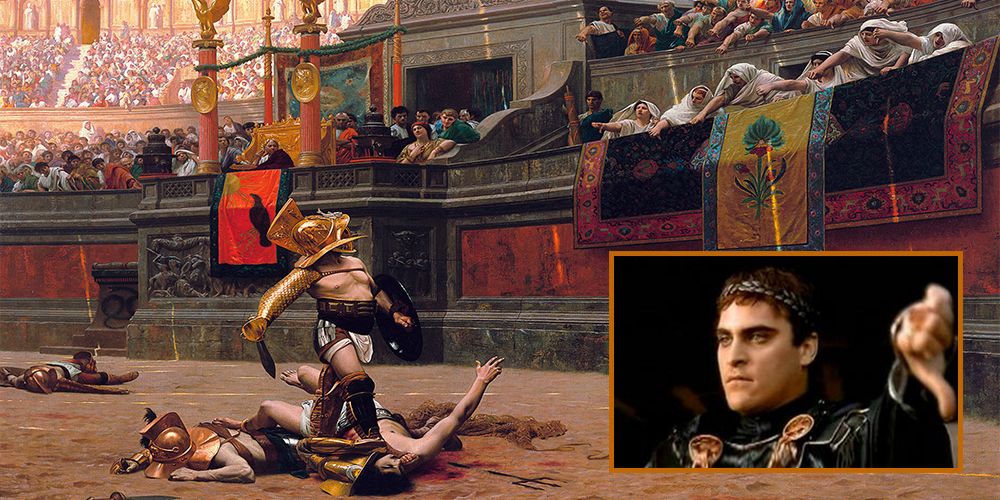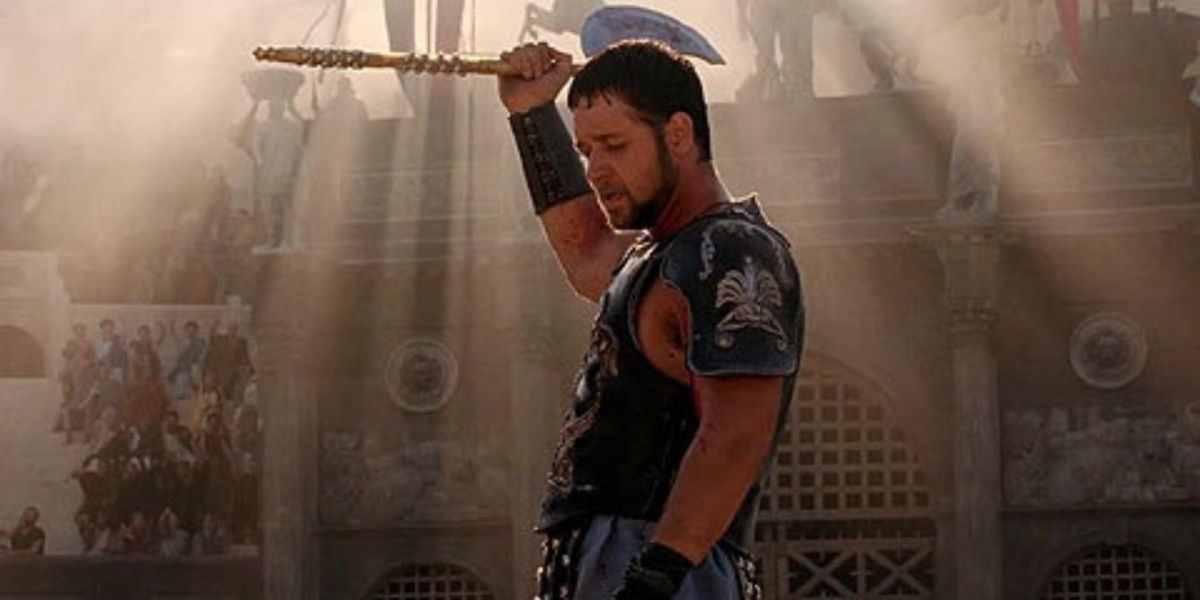The thumbs-up and thumbs-down signals seen in Gladiator have an interesting history and meaning in real history. During the Gladiator fights in Ridley Scott’s 2000 epic, sometimes a fighter’s fate would be decided by the Emperor with a thumb signal. In Gladiator, the Emperor who uses these signals is Commodus, played by Joaquin Phoenix. Throughout the film, Commodus uses a thumbs-up gesture to signal the victor of the fight and to spare the loser’s life, and other times he uses a thumb-down gesture to signal the loser’s death. While it is impossible to determine whether these gestures were actually used, the way they are depicted in Gladiator has been contested by a historian.
According to classical studies professor Anthony Corbeill, the thumbs-up and thumbs-down signals were part of a wide variety of non-verbal vocabulary that Romans would use to communicate (via Time). Based on different reports on how Romans communicated, Gladiator is historically inaccurate by switching the thumb gestures. If the Emperor wanted to spare the life of the Gladiator who lost, he would either make a closed fist or he would indicate with a thumbs-down gesture, indicating that the winning Gladiator should lay down their sword. On the other hand, the thumbs-up signal, back in Ancient Rome, was what is known as infestus pollex, or "hostile thumb." Essentially, the thumbs-up was equivalent to the messaging of today's middle finger: it was a threat and an insult.
No One Knows For Sure What The Thumb Signals Looked Like
Due to the time period, of course, there is no official visual record, such as video footage, of what really happened during the gladiator games. Historians have been able to piece these gestures and their meaning based off of sculptures, poems, and paintings that have survived the test of time. However, the biggest reason for the discrepancy can be credited to the source of what inspired movie director Ridley Scott to make Gladiator: a famous gladiator painting called Thumbs Down. This 1872 painting by Jean-Léon Gérôme depicted the end of a brutal gladiator fight with the winner staring up at the crowd, all of whom are gesturing with a thumbs-down. This sparked a controversy among historians as to whether or not the painting was historically accurate, but the debate ended up being meaningless, as with the painting’s popularity, the thumbs-down signal became associated with a negative response.
Why Gladiator Changes The Thumb Signals' Meaning
Based on the behind-the-scenes of the making of Gladiator, the screenwriters came to Ridley Scott with their script, proposal, and a copy of the Thumbs Down painting. The gladiator painting inspired Ridley Scott, and he agreed to make the film on the spot. With this in mind, Scott could have researched the real meaning behind the thumb gestures but instead, like most, he associated the thumbs-down with a call for death. However, the crew reported that they knew about the switch but decided to go with thumbs-up meaning life and thumbs-down meaning death, as how audiences would likely perceive these signals by contemporary use of "thumb language."
Ultimately, as most audience members wouldn’t know the contradicting and complicated history of the thumb gestures, this was probably the best choice. Changing the thumb gestures is a small historical change that helped audiences connect more with the source material and the story. Gladiator is not a historically accurate film, but it had a large impact on cinema. Not only did the film win Best Picture at the Oscars, but Russell Crowe’s Maximus and Joaquin Phoenix's Commodus have become two of the most iconic characters in cinematic history. Like most historical dramas, Gladiator took some creative liberties with the history its story is based on, but it always knew how to keep its audience entertained.



